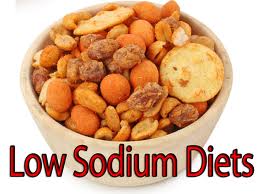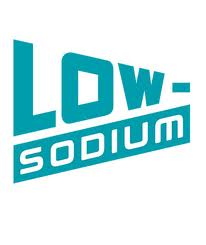Diets
- AIDS Diet
- Athletes's Diet
- Atkins Diet
- Bodybuilding Diet
- Breast Feeding Diet
- Cabbage Soup
- Cancer Patient's Diet
- Cardiac Patient's Diet
- Pediatric Diet
- Diabetes Diet
- Diet Plan
- Diet Programs
- Fitness Diet
- Cardiac Patients
- Kidney Disease Diet
- Low Calorie Diet
- Hypertension Diet
- Pregnancy Diet
- High Protein Diet
- Sports Diet
- Vegetarians Diet
- Weight Gain
- Fasting Diet
- Calorie Diets
- Celebrity Workout
- Diet for Gout
- Herbal Diets
- Zone Diet
- Herbal Phentermine
- South Beach Diet
- High Fiber
- Low Carb Diets
- Low Carb Dieting
- Low Carb Dieter Eat
- Atkins Low Carb Diet
- Atkins Low Carb Diet Program
- Monounsaturated Fats
- Food Choices Low Carb Meals
- Shopping Right Supplements
- Top 3 questions for Low Carb Dieting
- Better Food Choices
- Fluorosis
- Wu Yi Tea
- Ultra Lean Green Tea
- Acai Berry Power 500
Hypertension Diet - Low Salt Diet
Hypertension, or high blood pressure, is a persistent elevation of the blood pressure above normal. Hypertension affects about one in four adults in the United States. The exact cause of hypertension is unknown in more than 90% of the Americans with this condition. Heredity appears to, at least, be a partial factor in the development of hypertension. Other factors, including obesity and aging, also appear to play a role in contributing to hypertension.

Sodium chloride (salt) is one dietary factor that has been associated with the development of hypertension in susceptible individuals. These persons are referred to as "salt sensitive," and excessive sodium chloride in their diet can aggravate existing hypertension. Recent evidence suggests that dietary potassium, calcium, and protein are also involved in the regulation of blood pressure.
Obesity is a well documented contributing factor in the development of coronary artery disease, hypertension, and diabetes. The association between being overweight and hypertensive is well known, but the actual mechanism by which weight reduction reduces blood pressure is unknown.
If hypertension is not detected and left untreated, there exists an increased risk of stroke, heart attack, or kidney failure. Blood pressure is measured with a device known as a sphygmomanometer. A special cuff is inflated on the arm that will temporarily cut circulation to that extremity. A stethoscope placed over the major artery at the elbow allows the clinician to assess at what pressure the flow returns to the extremity (by slowly decreasing the pressure in the cuff). See the manual for additional information on blood pressure assessment.
The systolic pressure (top number) is the force of the blood on the blood vessel walls when the heart is contracting. The diastolic pressure (bottom number) is the force of the blood against the walls of the arteries when the heart is at rest.
Sodium (Salt) and Hypertension

Sodium consumption in the United States far exceeds the physiologic needs of healthy individuals. Present consumption of sodium has been estimated at 4,000 to 8,000 milligrams (mg) per day. Research suggests that the body can function normally at levels less than 200 mg, or one-tenth of a teaspoon of salt per day.
Although a high sodium intake does not cause hypertension, it does aggravate already existing hypertensive conditions. A decrease in dietary sodium has been shown to decrease blood pressure in individuals suffering from hypertension.
The American Heart Association has recommended reduction of dietary sodium to 1,000 mg per 1,000 calories per day, not to exceed 3,000 mg per day total. This level appears to be safe, feasible, and palatable for most people. The National Research Council of the National Academy of Sciences recommends a daily intake of sodium in the range of 1,100 mg to 3,000 mg for adults. One teaspoon of salt contains about 2,300 mg of sodium.
Facts about Sodium
Sodium is a naturally occurring mineral known to be an essential part of the diet. The body relies on sodium to help maintain water balance, perform muscle contraction, and conduct nerve impulses. Sodium is a normal component of all body fluids (saliva, digestive juices, blood, and perspiration) and is found in all body cells and bones. Sodium is a necessary part of life.
Common table salt, chemically know as sodium chloride, is 40% sodium and 60% chloride. One teaspoon of salt is equal to about 5 grams of sodium chloride. Sodium occurs naturally in many foods, such as dairy products, eggs, meat, poultry, fish, and vegetables. Other commonly eaten foods such as bread, bakery goods, and condiments also contain sodium. Ingredients containing sodium may be added to foods during processing to function as preservatives, emulsifiers, or flavor enhancers.
The following is a listing of foods commonly used to enhance the flavor of food and are considered to be high in sodium:
- Condiments: ketchup, prepared mustard, pickles, olives, soy sauce, salad dressings, steak sauce, barbecue sauce, Worcestershire sauce, chili sauce, and relish.
- Seasonings: onion salt, celery salt, garlic salt, seasoned salt, and bouillon cubes.
Salt has been used for hundreds of years to preserve food and improve its taste, making it the oldest known food additive. Here are some of the food uses for salt:
Flavor Enhancer: Salt is best known and used most often for this purpose. It brings out the natural flavor of foods and makes many nutritious foods more acceptable. Salt keeps bread from being bland, cheeses from being bitter and tart, and it gives processed meats their characteristic flavor.
Preservative: Salt has been used for hundreds of years to retard the growth of spoilage bacteria in a large variety of foods such as meats, dairy products, pickles, olives, margarine, and salad dressings. As a result, these foods can be kept longer.
Color Developer: In processed meats, such as ham, bacon, hot dogs, sausage, and sauerkraut, salt aids development of the color consumers expect (and that appeals to their appetite).
Control Agent: Salt regulates the rate of fermentation in the processing of pickles, sauerkraut, summer sausage, cheese, and bread dough and ensures consistency in these products.
Tips on How to Reduce Salt Consumption
- Reduce the amount of salt you use at the table. Start by cutting the amount you add in half, and eventually remove the salt shaker from the table.
- Reduce the amount of high sodium seasonings you use. These include soy sauce, steak sauce, garlic and onion salt, and monosodium glutamate.
- Limit and eventually stop using salt and high sodium seasonings in cooking. Experiment with alternative flavorings such as herbs, spices, fruit juices, vinegars, and wines.
- Limit and reduce your consumption of salty foods such as pickles, cured meats, salted snacks, and canned soups. Use more fresh products.
- Look into the wide variety of unsalted food products that are currently on the market.
- When you are eating out, ask that you order be prepared without added salt.
- Airlines will provide a low sodium meal with 24 hour notice.

Note: Most salt substitutes contain potassium. If you are currently on prescription medications, first discuss the use of a salt substitute with your physician. Some medications when used with a salt substitute can lead to excessively HIGH blood potassium levels.
